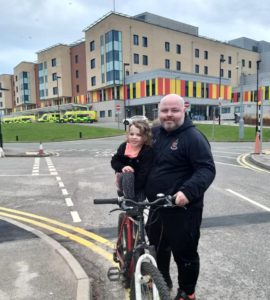


Every kid should be able to learn in a setting that is secure. It should be encouraging, and demanding, according to a whole-child approach to education. You likely already do a lot of this. It never hurts to approach things orderly.
It’s good to link education to a child’s social and emotional growth. Teachers are able to create an atmosphere where students are able to develop while satisfying their emotional needs.
Are you looking for ways schools can support the whole child? Well, we have got some of the best ones for you here:
It entails giving students built-in opportunities. It helps to put what they are learning into practice. It does not include overhauling the entire curriculum. Consider including assignments that will let the pupils operate vehicles. For effective school governance, you should put in place a solid plan.
If you stand and preach while teaching, you risk missing opportunities. It might be a hurdle to showcase pupils’ abilities. They end up losing their interest in learning. It will be amazing for you how you may transform a small part of your lesson plan into practical activity.
Students can use their talents through collaboration with teachers of other subject areas. They can also learn through a thematic approach to standards. Using a more cross-curricular approach can cause spending more time on lesson planning. You will notice children’s faces light up. It happens when you can draw links between abstract ideas.
It includes fractions and commonplace activities. They involve cooking, comparing math to art, and related activities. Help your child succeed in elementary school with the help of careful planning.
When supporting education, it’s important to remember that achievement includes an emotional component. Create a setting where both success and failure are seen as learning opportunities. It helps students make judgments and take ownership of their work.
How well a youngster understands or perceives their talents and shortcomings. How it will affect their educational choices and the amount of effort they make. Students must recognize their potential. They must be self-aware whether it’s high school learning or any grade level.
The whole child can be emphasized by including service-learning and community service projects in the regular curriculum. It involves children in worthwhile endeavours beyond the classroom. It also aids them in making connections to their own lives. Consider ways to collaborate with other organizations in your neighbourhood.
Your children may not take part in extracurricular activities. Think about pairing them up as reading partners. You can organize projects or artwork for school exhibitions. It also includes simply having discussions about social duty.
Students can better apply their newly acquired knowledge when actively participating in the learning process. Consequently, design education that involves learners actively considering their work. It should enhance the students’ skills greatly. Whether it’s about composing a narrative essay for high school or any other academic piece, they should attain excellence in such skills.
When implementing assessments based on student projects, include self-reflection and self-assessment as steps in the procedure. Setting objectives together is the first step in teaching students how to evaluate their work. It helps them contrast it to the performance criteria and how to improve their work. This doesn’t need to go against the district’s or the school’s expectations of success. It only establishes a path to that achievement in the student’s language.
Respond to your students’ diverse learning styles and skills. You can do this by using an arrangement of learning tools, not textbooks. Without a doubt, books are valuable. But, using various resources, including conversation, digital media, and art, is practical.
Use open-ended questions to enable students to expand their and their classmates’ ideas. Teaching the Whole Child research concluded that when classroom debates are carried out well, students and teachers build upon one another’s ideas. In such debates, most of the argument is student-driven.
Students are complete individuals with a range of needs. The above-mentioned methods create successful techniques for enhancing students’ learning outcomes.